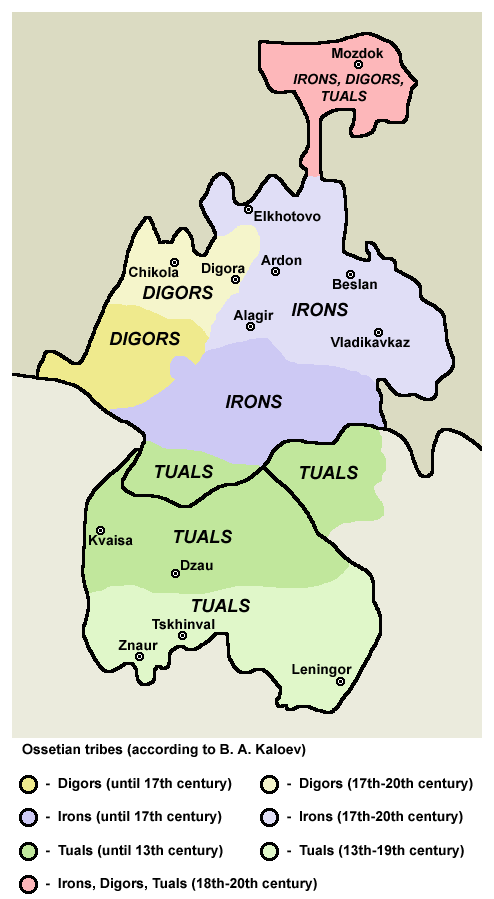Digor people on:
[Wikipedia]
[Google]
[Amazon]
 The Digor or West Ossetians (, ) are a subgroup of the Ossetians (Alans). They speak the Digor dialect of the Eastern Iranian Ossetian language, which in
The Digor or West Ossetians (, ) are a subgroup of the Ossetians (Alans). They speak the Digor dialect of the Eastern Iranian Ossetian language, which in
 The Digor or West Ossetians (, ) are a subgroup of the Ossetians (Alans). They speak the Digor dialect of the Eastern Iranian Ossetian language, which in
The Digor or West Ossetians (, ) are a subgroup of the Ossetians (Alans). They speak the Digor dialect of the Eastern Iranian Ossetian language, which in USSR
The Union of Soviet Socialist Republics. (USSR), commonly known as the Soviet Union, was a List of former transcontinental countries#Since 1700, transcontinental country that spanned much of Eurasia from 1922 until Dissolution of the Soviet ...
, was considered a separate language until 1937. Since 1932, it has been considered just a dialect of Ossetian language. The speakers of the other dialect - Iron (East Ossetian) - do not understand Digor (West Ossetian), although the Digor usually understand East Ossetian, as it was the official language of the Ossetian people and was taught in schools. In the 2002 Russian Census 607 Digors were registered, but by the 2010 Russian Census, their number had dropped to only 223. It was estimated that there are 100,000 speakers of the dialect, most of whom identify as Ossetians. The Digor mainly live in Digorsky, Irafsky, Mozdoksky districts and Vladikavkaz
Vladikavkaz, formerly known as Ordzhonikidze () or Dzaudzhikau (), is the capital city of North Ossetia–Alania, Russia. It is located in the southeast of the republic at the foothills of the Caucasus, situated on the Terek (river), Terek River. ...
, North Ossetia–Alania
North Ossetia–Alania (; ), officially the Republic of North Ossetia–Alania, is a republics of Russia, republic of Russia situated in the North Caucasus of Eastern Europe. It borders the country of Georgia (country), Georgia to the south, a ...
, also in Kabardino-Balkaria and Turkey
Turkey, officially the Republic of Türkiye, is a country mainly located in Anatolia in West Asia, with a relatively small part called East Thrace in Southeast Europe. It borders the Black Sea to the north; Georgia (country), Georgia, Armen ...
( Poyrazlı, Boğazlıyan).
Etymology
Scholars generally link the root ''dig''- with the Circassianendonym
An endonym (also known as autonym ) is a common, name for a group of people, individual person, geographical place, language, or dialect, meaning that it is used inside a particular group or linguistic community to identify or designate them ...
''A-dyg-e'', where the suffix ''-or'' could be a mark of plurality as found in many contemporary Caucasian languages. This point of view was criticized by R. Bielmeier and D. Bekoev, they raised the ethnonym to "''tygwyr''" in the Iron dialect, meaning "''gathering, gathering, group''."
History
Middle Ages
The early medieval '' Ashkharatsuyts'' makes mention of the "nation of the Ash-Tigor Alans" (''azg Alanac' Aš-Tigor''), or simply the "Dikor nation" (''Dik'ori-n''), which is generally regarded as an early reference to the Digor. This fact, and other linguistic considerations, have led scholars to believe that Digor dialect became separated from Proto-Ossetian during the Mongol conquests.Religion
Most Digors are Muslim. They were converted toSunni Islam
Sunni Islam is the largest Islamic schools and branches, branch of Islam and the largest religious denomination in the world. It holds that Muhammad did not appoint any Succession to Muhammad, successor and that his closest companion Abu Bakr ...
around the 17–18th centuries, under the influence of the neighboring Kabarday
The Kabardians (Kabardian language, Kabardian: Къэбэрдей адыгэхэр; Adyghe language, Adyghe: Къэбэртай адыгэхэр; ) or Kabardinians are one of the twelve major Circassians, Circassian tribes, representing one ...
people who introduced Islam
Islam is an Abrahamic religions, Abrahamic monotheistic religion based on the Quran, and the teachings of Muhammad. Adherents of Islam are called Muslims, who are estimated to number Islam by country, 2 billion worldwide and are the world ...
to them. Starting from the 18th century, the ethnonym ''digor'' became widely used by travelers and in Russian official documents. Digoria was annexed to the Russian Empire
The Russian Empire was an empire that spanned most of northern Eurasia from its establishment in November 1721 until the proclamation of the Russian Republic in September 1917. At its height in the late 19th century, it covered about , roughl ...
quite late compared to the rest of Ossetia. In the second half of the 19th century, large numbers of Muslim Digors emigrated to the Ottoman Empire.
Demographics
Digors make the majority of the Ossetians in Digoria, the western part of theNorth Ossetia–Alania
North Ossetia–Alania (; ), officially the Republic of North Ossetia–Alania, is a republics of Russia, republic of Russia situated in the North Caucasus of Eastern Europe. It borders the country of Georgia (country), Georgia to the south, a ...
( Digorsky and Irafsky districts), and in Kabardino-Balkaria. In the beginning of the 19th century some families from Digoria resettled in Mozdoksky District, where they reside in the settlements of Novo-Osetinskaya and Chernoyarskaya.
See also
*Ossetians
The Ossetians ( or ; ),Merriam-Webster (2021), s.v"Ossete" also known as Ossetes ( ), Ossets ( ), and Alans ( ), are an Iranian peoples, Iranian ethnic group who are indigenous to Ossetia, a region situated across the northern and southern side ...
* Ossetian Muslims
* North Ossetia–Alania
North Ossetia–Alania (; ), officially the Republic of North Ossetia–Alania, is a republics of Russia, republic of Russia situated in the North Caucasus of Eastern Europe. It borders the country of Georgia (country), Georgia to the south, a ...
* Digor (dialect)
* Jassic (dialect)
Sources
*Wixman. ''The Peoples of the USSR'', p. 58References
{{authority control Ossetian people Peoples of the Caucasus Ethnic groups in Russia Muslim communities of Russia Muslim communities of the Caucasus